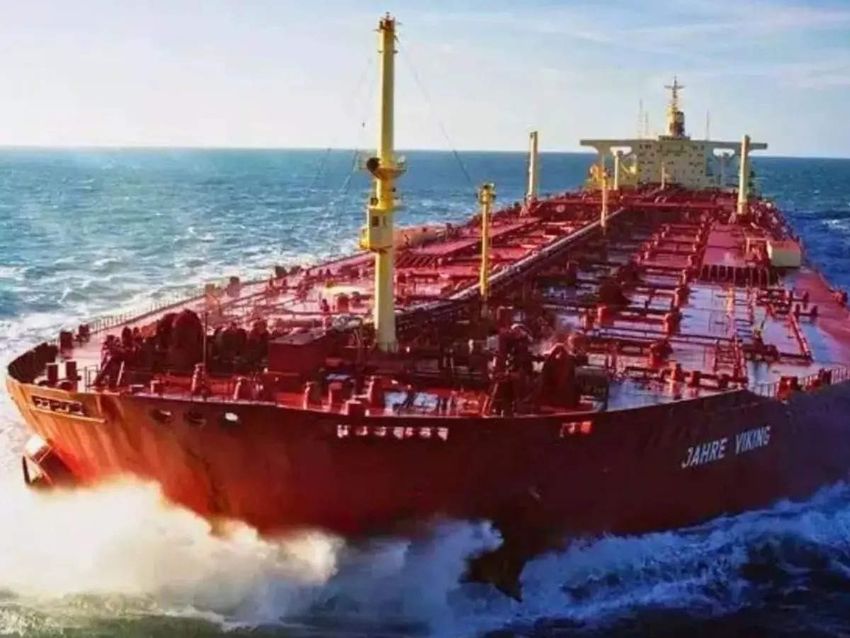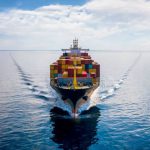When we think of giant machines, most of us imagine airplanes or skyscrapers. But none compare to the engineering marvel known as the Seawise Giant — the largest ship ever constructed in human history. 😮⚓
So, how did engineers make a vessel longer than the Empire State Building is tall, able to carry over 4 million barrels of crude oil, and sail across oceans with that kind of load?
This article breaks down the fascinating story of the Seawise Giant — from design and construction to the engineering secrets that made her a floating legend. 🧠🔩
🧾 Basic Facts: Meet the Seawise Giant
Before diving into how it was built, let’s look at why this ship made history.
| Specification | Detail |
|---|---|
| Original Name | Oppama (later renamed Seawise Giant) |
| Length | 458.45 meters (1,504.1 feet) 🚢 |
| Deadweight Tonnage (DWT) | 564,763 tons ⚖️ |
| Gross Tonnage | 260,941 GT |
| Draft | 24.6 meters (over 80 feet) 🏊♂️ |
| Builder | Sumitomo Heavy Industries, Japan 🇯🇵 |
| Year Built | 1979 |
| Type | ULCC (Ultra Large Crude Carrier) 🛢️ |
🏗️ 1. Designing the Giant – Planning Beyond Limits 📐📊
Building a ship of this magnitude wasn’t just about making it bigger — it was about precision and balance.
Key Design Challenges:
-
Hull Strength: A longer ship means more bending stress in waves. The design had to minimize hull flexing using advanced structural engineering.
-
Stability: Carrying 4 million barrels of oil means managing sloshing and dynamic loads.
-
Propulsion: A powerful engine was needed to push this behemoth across oceans.
Design Innovations:
-
Hydrodynamic Hull: To reduce drag and increase fuel efficiency.
-
Double Bottom Structure: For extra safety in case of grounding or puncture.
-
Ballast Systems: Giant ballast tanks helped control the ship’s weight distribution.
🏭 2. Shipyard Construction – Building Block by Block 🧱🛠️
The Seawise Giant was built at Sumitomo’s Oppama shipyard in Yokosuka, Japan. Due to its size, traditional shipbuilding techniques had to be scaled up massively.
Modular Construction:
-
The ship was not built in one piece, but in giant prefabricated sections.
-
Each section was assembled in dry docks using massive cranes. 🏗️
Welding and Joining:
-
Over 300 km of welding seams joined the sections.
-
Engineers used ultrasonic testing to ensure structural integrity.
Hull Painting:
-
Special marine-grade coatings were applied to reduce corrosion and resist saltwater damage. 🎨🌊
⚙️ 3. The Engine Room – Powering the Titan 🔋⚡
What does it take to move 564,000 tons of steel and oil? 💪
Main Engine:
-
B&W diesel engine, producing 50,000+ horsepower. 🔥
-
Connected to a massive fixed-blade propeller weighing over 50 tons.
Fuel System:
-
Despite its size, it moved relatively slowly: 16 knots (30 km/h).
-
The ship was not fuel-efficient, but it wasn’t designed to be — it was made to maximize cargo capacity.
🔐 4. Cargo and Tank Systems – Giant Oil Storage on the Sea 🛢️🌊
Being an ULCC (Ultra Large Crude Carrier), Seawise Giant was built solely for one job: transport massive amounts of crude oil across oceans.
Cargo Handling Systems:
-
46 oil tanks were distributed throughout the ship’s hull.
-
Specialized pumps and pipelines moved oil to and from the shore efficiently.
Safety Features:
-
Inert Gas System to prevent tank explosions.
-
Double-hull compartments to contain oil in case of outer hull breach.
🔧 5. Launch and Commissioning – The Giant Comes to Life 🚀🚢
The ship was launched in 1979 as Oppama, but later bought and upgraded by a Hong Kong shipping magnate, Tung Chao Yung, who renamed her Seawise Giant (a pun on “C.Y. Tung”).
The upgrades involved:
-
Increasing her length and cargo capacity.
-
Enhancing internal piping and safety systems.
-
Strengthening the hull to increase durability.
💥 6. War, Damage, and Resurrection – The Ship That Refused to Die 💣🛠️
During the Iran-Iraq War in 1988, the Seawise Giant was attacked and sunk by Iraqi fighter jets while anchored off Iran.
But that wasn’t the end. 👀
She was:
-
Refloated in 1991 🚁
-
Repaired and converted into a floating storage and offloading unit (FSO)
-
Renamed Happy Giant, then Jahre Viking, and finally Knock Nevis
🧾 Final Voyage and Scrapping ⚰️⚓
After nearly 30 years of service, the Seawise Giant was decommissioned in 2009 and scrapped at Alang, India.
But even in her end, she remained a legend — a testament to what human engineering can achieve. 🏆🌍
🚢 Why Seawise Giant Was So Unique
✅ Largest moving man-made object ever built
✅ Could not pass through the Panama or Suez Canal
✅ Too large to dock in most ports
✅ Required custom-built terminals for loading/unloading
✅ Engineered purely for scale, not speed or flexibility
🌍 What Did We Learn from Building the Seawise Giant?
Building the Seawise Giant pushed the limits of:
-
Marine architecture
-
Heavy industry manufacturing
-
Fluid dynamics and stability
-
Global logistics
It showed the world that with proper engineering, even the ocean can be tamed — one rivet at a time. ⚓🔧

